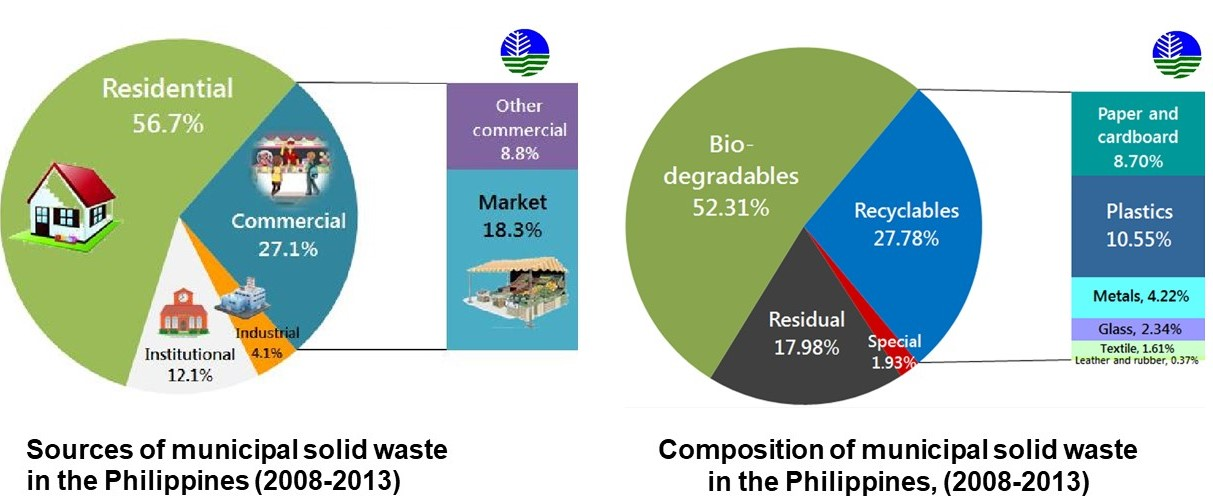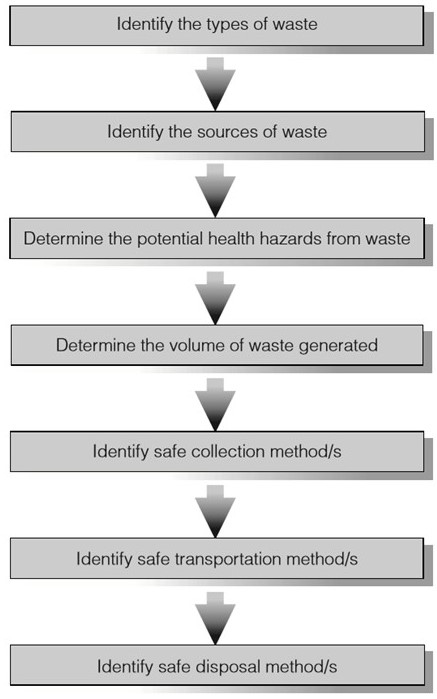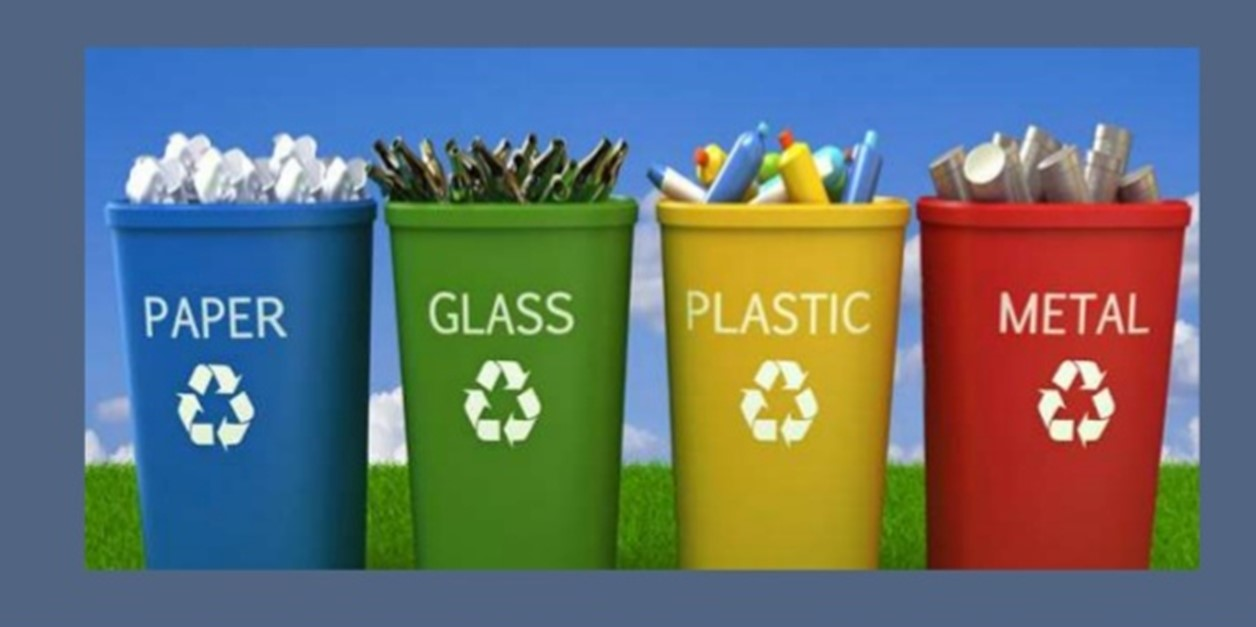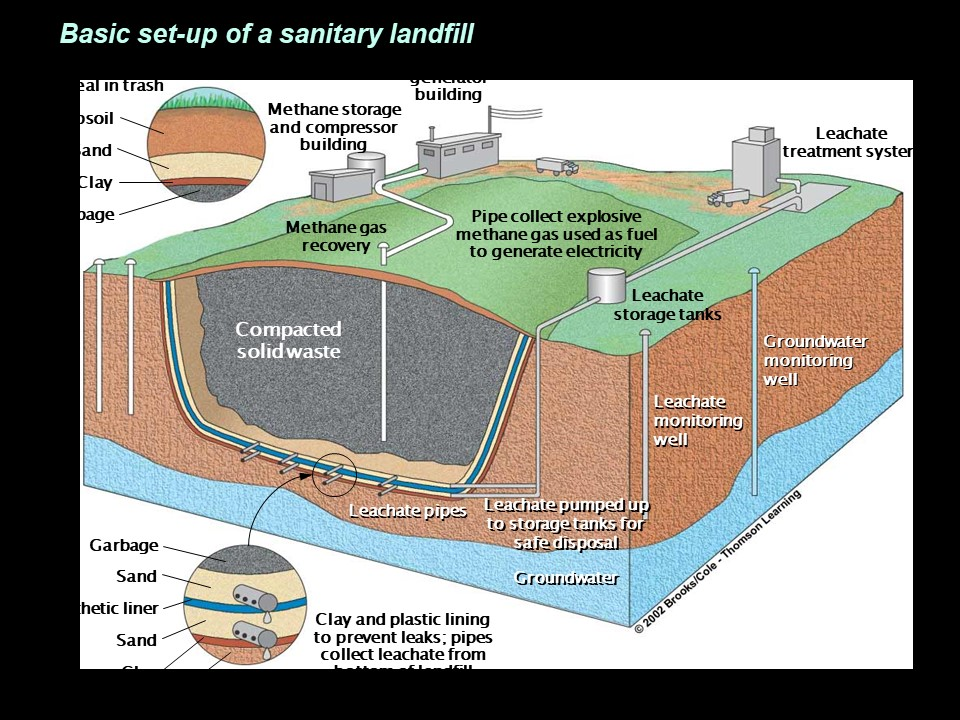
Module 5: Solid Waste Management
What a Waste!
Definitions of Solid Wastes
US Environmental Protection Agency: Any garbage or refuse, sludge, from a wastewater treatment plant, water supply treatment plant, or air pollution control facility, and other discarded material, resulting from industrial, commercial, mining, and agricultural operations, and from community activities
Department of Environment and Natural Resources: All discarded household, commercial waste, non-hazardous institutional, ports/harbor and industrial waste, street sweepings, construction debris, agriculture waste, and other non-hazardous/non-toxic solid waste
Envi. Sci. Class: All unwanted non-liquid and non-soluble types of waste
Solid Waste and Human Health
Breeding of Disease Vectors
Improper solid waste management is positively correlated with Dengue incidences
Such wastes are larval habitats, breeding spots for Aedes egypti mosquitoes which spread dengue
Generation of “leachates”
Leachates: any contaminated liquid with heavy metals and bacterial pollutants that is generated from water percolating through as solid waste disposal site
Primarily found in industrial wastes, they may affect and contaminate the food chain
The Plastic Problem
Facts and Data
Production
According to UNEP, 300 million tonnes of plastic is produced every year, and not all of it is recycled
Only 9% of all plastic produced is recycled
Single-use plastics are illegal in some parts of the world
World plastic production has doubled over the past 50 years
Consumption
2 million plastic bags are used every minute worldwide
The average time a plastic bag is used is just 12 minutes
One million plastic bottles are bought every minute
Disposal
Every minute of every day, a truckload of plastic is dumped in the ocean
73% of beach litter worldwide is plastic
There could be more plastic than fish in the ocean by 2050
Up to 95% of plastic polluting oceans is carried by 10 rivers
Effects
99% of seabirds will be eating plastic by 2050
The average person eats 70,000 microplastics each year
Microplastics
Primary Microplastics
Smaller than 5 mm
Ex: Nurdles (beads from plastic manufacturing), cosmetic microbeads, clothing fibers
Secondary Microplastics
Large plastic items (ex: water bottles)
Caused by UV making plastic material brittle and physical breakdown due to wave action
Solid Waste in the Philippines and the World
Worldwide Distribution of Solid Wastes
Fast Facts
The world generates 2.01 billion tonnes of municipal solid waste annually, with at least 33% of that–extremely conservatively–not managed in an environmentally safe manner
Waste generated per person per day averages 0.74 kilogram but ranges widely, from 0.11 to 4.54 kilograms
Geographic Distribution
Fast-growing regions (Sub-Saharan Africa, South Asia) are expected to generate high amounts of waste in the coming years
Global waste is expected to grow to 3.40 billion tonnes by 2050, more than double population growth over the same period
Income Distribution
There is a positive correlation between waste generation and income level
High-income countries generate about 34% or 683 million tonnes, of the world’s waste
Higher-income groups generate more waste than lower-income groups
Solid Waste Distribution in the Philippines

The most amount of wastes in communities come from domestic households
The predominant type of wastes in communities are biodegradable
Solid Waste Management
Definition and Principles
Solid Waste Management: the control of generation, storage, collection, transport or transfer, processing and disposal of solid waste materials in a way that best addresses the range of public health, conservation, economic, aesthetic, engineering, and other environmental considerations
The Solid Waste Management System

Solid Waste Processes
Waste Segregation
Determine if the waste is Biodegradable or Non-Biodegradable
Non-Biodegradable, Recyclable Materials may be broken down further:

Waste Disposal
Technology, System, and Method of waste disposal is dependent on both a nation’s financial capacity and technological sophistication
Onsite Disposal
Communal/Family Pit Disposal
Crucial to identify the location of the water sources
Design depends on the number of people
Must be fenced off and most preferred when organic wastes are the main components
Periodic soil cover may be needed with covered with thin layer of soil (~0.1 m thick) at least once a week
Ideally six cubic meters per fifty persons, but may be fairly shallow (usually a meter deep)
Communal/Family Bin
Designed to collect waste where it will not be dispersed by wind or animals, usually for “emergency” purposes
Plastic containers inappropriate as they can get blown over by wind
Oil drums ideal, base perforated to allow liquid to pass
A single-100 liter bin form every fifty people in domestic areas
Wastes must be regularly collected to off-site disposal sites
Offsite Disposal
Primary disposal method for NCR Solid Waste (Province of Rizal)
Incineration
Burning at high temperatures (900—1000oC)
Leads to 90% reduction in solid waste volume
Produces heat which could be used to produce steam recovered as energy, alongside ash and non-combustibles
Disadvantages:
Expensive and illegal
Air pollution (nitrogen and sulfur oxides) causes acid rain
Emissions include particulate matter, lead, mercury, and dioxins
Sanitary Landfill
Types of Sanitary Landfill
Landraise: Build-up of waste to form a hill of variable dimensions which exceeds the initial elevation of the landscape
Landfill (sensu stricto): Encompasses tipping into appropriate natural depressions in the landscapes such as the valleys, or into ground excavations; such as quarries
Basic Operations and Setup

Confine the waste to the smallest practical area, reduce it to the smallest practical volume, and cover it with a layer of compacted soil or specially designed tarps at the end of each day of operation, or more frequently if necessary
The finishing cover (cap) is at least 50 cm of compacted soil (clay) designed to minimize infiltration of surface water
Leachate pipes prevent leachates (water percolating/leaching into the soil)
Methane can be harvested as a source of water
Factors for Sanitary Landfill Location
Unfavorable Sites for Refuse Disposal (Sanitary Landfills)
Limestone or highly fractured rock quarries and most sand and gravel pits
Limestones can be dissolved slowly by acidic waters such as rainwater. These are the common features that can develop due to dissolution of limestone
Ex: Swampy areas and floodplains, areas in proximity to the coast, areas underlain by highly permeable materials and with high water table (i.e., near to the surface)
Acceptable Sites for Refuse Disposal (Sanitary Landfills)
Linings for Waste Containment
Clay Sealing: Achieved by progressive importation of clay from other areas which provide a natural impermeable layer
Gomembranes: synthetic liners which are usually 0.5—2 mm thick with low permeability
Bitumen and Aggregate Liners: Cheap alternative for lining
Consider the unique geological characteristics of potential and current sites
Flat areas provided an adequate layer of material with low permeability is present above the rock hosting groundwater
If constrained with rough topography, “best” sites are near the head of gullies with minimum surface water
Other Considerations for Sanitary Landfill Operations
Engineering Work (Slope Failures or Leachate Barriers)
Monitoring and Rehabilitation Programs
Noise abatement (screening by tree), bird and pest control, prevention of odors and fires, well-secured area
Site restoration by adequate removal and monitoring of leachates and methane gas
Financial assurance criteria
The Ecological Solid Waste Management Act (R.A. 9003)
Goals of the Act
Creates the necessary institutional mechanisms and incentives
Declares certain acts prohibited
Provides penalties and appropriates funds
Role of the LGU
The responsibility of each city/muncipality shall form a city/muncipal waste management board to prepare, submit, and implement a plan for the safe and sanitary management of solid waste generated within its jurisdiction
LGUs create a Local Government Solid Waste Management Plan (10-year plan for the reuse, recycling, and composting of wastes generated in their areas) AND ensure the efficient management of solid wastes generated within its jurisdiction
Waste Segregation
Mandatory under Sec. 22 of RA 9003
Segregation of wastes should primarily be conducted at the source
There should be a designated area to accumulate source-separated recyclable materials to be collected by the municipality or private center
Separate, properly labeled containers for each type of wastes
Recycling
Reclamation Programs and Buy-Back Centers for Recyclables and Toxics
Prohibition on the Use of Non-Environmentally Acceptable Packaging
Establishment of LGU Materials Recovery Facility (a facility to receive mixed waste for final sorting, segregation, composting, and recycling)
Waste Management
Prohibition Against the Use of Open Dumps for Solid Waste
All waste management facilities are required to acquire an Environmental Compliance Certificate (ECC) before being allowed operation
Prohibited Acts
Littering, throwing, dumping of waste matters in public places, such as roads, sidewalks, canals, esteros or parks, and establishment, or causing or permitting the same
Open burning of solid waste
Permitting the collection of non-segregated or unsorted waste
Squatting in open dumps and landfills
Open dumping, burying of (non-)biodegradable materials in flood-prone areas
Unauthorized removal of recyclable material intended for collection by authorized persons
The construction of any establishment within 200 meters from open dumps or controlled dumps, or sanitary landfills
The construction or operation of landfills or any waste disposal facility on any aquifer, groundwater reservoir or watershed area
Fines and Penalties
Minor Offenses
A fine of not less than 300 php but not more than 1000 php
Render community service for not less than 1 day to not more than 15 days to an LGU where such prohibited acts are committed
Major Offenses
A fine of 500,000 php plus an amount not less than 5% but not more than 10% of their net annual income of the previous years
Module 5: Solid Waste Management
What a Waste!
Definitions of Solid Wastes
US Environmental Protection Agency: Any garbage or refuse, sludge, from a wastewater treatment plant, water supply treatment plant, or air pollution control facility, and other discarded material, resulting from industrial, commercial, mining, and agricultural operations, and from community activities
Department of Environment and Natural Resources: All discarded household, commercial waste, non-hazardous institutional, ports/harbor and industrial waste, street sweepings, construction debris, agriculture waste, and other non-hazardous/non-toxic solid waste
Envi. Sci. Class: All unwanted non-liquid and non-soluble types of waste
Solid Waste and Human Health
Breeding of Disease Vectors
Improper solid waste management is positively correlated with Dengue incidences
Such wastes are larval habitats, breeding spots for Aedes egypti mosquitoes which spread dengue
Generation of “leachates”
Leachates: any contaminated liquid with heavy metals and bacterial pollutants that is generated from water percolating through as solid waste disposal site
Primarily found in industrial wastes, they may affect and contaminate the food chain
The Plastic Problem
Facts and Data
Production
According to UNEP, 300 million tonnes of plastic is produced every year, and not all of it is recycled
Only 9% of all plastic produced is recycled
Single-use plastics are illegal in some parts of the world
World plastic production has doubled over the past 50 years
Consumption
2 million plastic bags are used every minute worldwide
The average time a plastic bag is used is just 12 minutes
One million plastic bottles are bought every minute
Disposal
Every minute of every day, a truckload of plastic is dumped in the ocean
73% of beach litter worldwide is plastic
There could be more plastic than fish in the ocean by 2050
Up to 95% of plastic polluting oceans is carried by 10 rivers
Effects
99% of seabirds will be eating plastic by 2050
The average person eats 70,000 microplastics each year
Microplastics
Primary Microplastics
Smaller than 5 mm
Ex: Nurdles (beads from plastic manufacturing), cosmetic microbeads, clothing fibers
Secondary Microplastics
Large plastic items (ex: water bottles)
Caused by UV making plastic material brittle and physical breakdown due to wave action
Solid Waste in the Philippines and the World
Worldwide Distribution of Solid Wastes
Fast Facts
The world generates 2.01 billion tonnes of municipal solid waste annually, with at least 33% of that–extremely conservatively–not managed in an environmentally safe manner
Waste generated per person per day averages 0.74 kilogram but ranges widely, from 0.11 to 4.54 kilograms
Geographic Distribution
Fast-growing regions (Sub-Saharan Africa, South Asia) are expected to generate high amounts of waste in the coming years
Global waste is expected to grow to 3.40 billion tonnes by 2050, more than double population growth over the same period
Income Distribution
There is a positive correlation between waste generation and income level
High-income countries generate about 34% or 683 million tonnes, of the world’s waste
Higher-income groups generate more waste than lower-income groups
Solid Waste Distribution in the Philippines

The most amount of wastes in communities come from domestic households
The predominant type of wastes in communities are biodegradable
Solid Waste Management
Definition and Principles
Solid Waste Management: the control of generation, storage, collection, transport or transfer, processing and disposal of solid waste materials in a way that best addresses the range of public health, conservation, economic, aesthetic, engineering, and other environmental considerations
The Solid Waste Management System

Solid Waste Processes
Waste Segregation
Determine if the waste is Biodegradable or Non-Biodegradable
Non-Biodegradable, Recyclable Materials may be broken down further:

Waste Disposal
Technology, System, and Method of waste disposal is dependent on both a nation’s financial capacity and technological sophistication
Onsite Disposal
Communal/Family Pit Disposal
Crucial to identify the location of the water sources
Design depends on the number of people
Must be fenced off and most preferred when organic wastes are the main components
Periodic soil cover may be needed with covered with thin layer of soil (~0.1 m thick) at least once a week
Ideally six cubic meters per fifty persons, but may be fairly shallow (usually a meter deep)
Communal/Family Bin
Designed to collect waste where it will not be dispersed by wind or animals, usually for “emergency” purposes
Plastic containers inappropriate as they can get blown over by wind
Oil drums ideal, base perforated to allow liquid to pass
A single-100 liter bin form every fifty people in domestic areas
Wastes must be regularly collected to off-site disposal sites
Offsite Disposal
Primary disposal method for NCR Solid Waste (Province of Rizal)
Incineration
Burning at high temperatures (900—1000oC)
Leads to 90% reduction in solid waste volume
Produces heat which could be used to produce steam recovered as energy, alongside ash and non-combustibles
Disadvantages:
Expensive and illegal
Air pollution (nitrogen and sulfur oxides) causes acid rain
Emissions include particulate matter, lead, mercury, and dioxins
Sanitary Landfill
Types of Sanitary Landfill
Landraise: Build-up of waste to form a hill of variable dimensions which exceeds the initial elevation of the landscape
Landfill (sensu stricto): Encompasses tipping into appropriate natural depressions in the landscapes such as the valleys, or into ground excavations; such as quarries
Basic Operations and Setup

Confine the waste to the smallest practical area, reduce it to the smallest practical volume, and cover it with a layer of compacted soil or specially designed tarps at the end of each day of operation, or more frequently if necessary
The finishing cover (cap) is at least 50 cm of compacted soil (clay) designed to minimize infiltration of surface water
Leachate pipes prevent leachates (water percolating/leaching into the soil)
Methane can be harvested as a source of water
Factors for Sanitary Landfill Location
Unfavorable Sites for Refuse Disposal (Sanitary Landfills)
Limestone or highly fractured rock quarries and most sand and gravel pits
Limestones can be dissolved slowly by acidic waters such as rainwater. These are the common features that can develop due to dissolution of limestone
Ex: Swampy areas and floodplains, areas in proximity to the coast, areas underlain by highly permeable materials and with high water table (i.e., near to the surface)
Acceptable Sites for Refuse Disposal (Sanitary Landfills)
Linings for Waste Containment
Clay Sealing: Achieved by progressive importation of clay from other areas which provide a natural impermeable layer
Gomembranes: synthetic liners which are usually 0.5—2 mm thick with low permeability
Bitumen and Aggregate Liners: Cheap alternative for lining
Consider the unique geological characteristics of potential and current sites
Flat areas provided an adequate layer of material with low permeability is present above the rock hosting groundwater
If constrained with rough topography, “best” sites are near the head of gullies with minimum surface water
Other Considerations for Sanitary Landfill Operations
Engineering Work (Slope Failures or Leachate Barriers)
Monitoring and Rehabilitation Programs
Noise abatement (screening by tree), bird and pest control, prevention of odors and fires, well-secured area
Site restoration by adequate removal and monitoring of leachates and methane gas
Financial assurance criteria
The Ecological Solid Waste Management Act (R.A. 9003)
Goals of the Act
Creates the necessary institutional mechanisms and incentives
Declares certain acts prohibited
Provides penalties and appropriates funds
Role of the LGU
The responsibility of each city/muncipality shall form a city/muncipal waste management board to prepare, submit, and implement a plan for the safe and sanitary management of solid waste generated within its jurisdiction
LGUs create a Local Government Solid Waste Management Plan (10-year plan for the reuse, recycling, and composting of wastes generated in their areas) AND ensure the efficient management of solid wastes generated within its jurisdiction
Waste Segregation
Mandatory under Sec. 22 of RA 9003
Segregation of wastes should primarily be conducted at the source
There should be a designated area to accumulate source-separated recyclable materials to be collected by the municipality or private center
Separate, properly labeled containers for each type of wastes
Recycling
Reclamation Programs and Buy-Back Centers for Recyclables and Toxics
Prohibition on the Use of Non-Environmentally Acceptable Packaging
Establishment of LGU Materials Recovery Facility (a facility to receive mixed waste for final sorting, segregation, composting, and recycling)
Waste Management
Prohibition Against the Use of Open Dumps for Solid Waste
All waste management facilities are required to acquire an Environmental Compliance Certificate (ECC) before being allowed operation
Prohibited Acts
Littering, throwing, dumping of waste matters in public places, such as roads, sidewalks, canals, esteros or parks, and establishment, or causing or permitting the same
Open burning of solid waste
Permitting the collection of non-segregated or unsorted waste
Squatting in open dumps and landfills
Open dumping, burying of (non-)biodegradable materials in flood-prone areas
Unauthorized removal of recyclable material intended for collection by authorized persons
The construction of any establishment within 200 meters from open dumps or controlled dumps, or sanitary landfills
The construction or operation of landfills or any waste disposal facility on any aquifer, groundwater reservoir or watershed area
Fines and Penalties
Minor Offenses
A fine of not less than 300 php but not more than 1000 php
Render community service for not less than 1 day to not more than 15 days to an LGU where such prohibited acts are committed
Major Offenses
A fine of 500,000 php plus an amount not less than 5% but not more than 10% of their net annual income of the previous years
 Knowt
Knowt